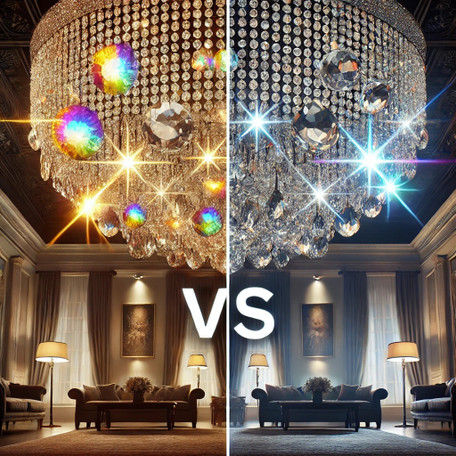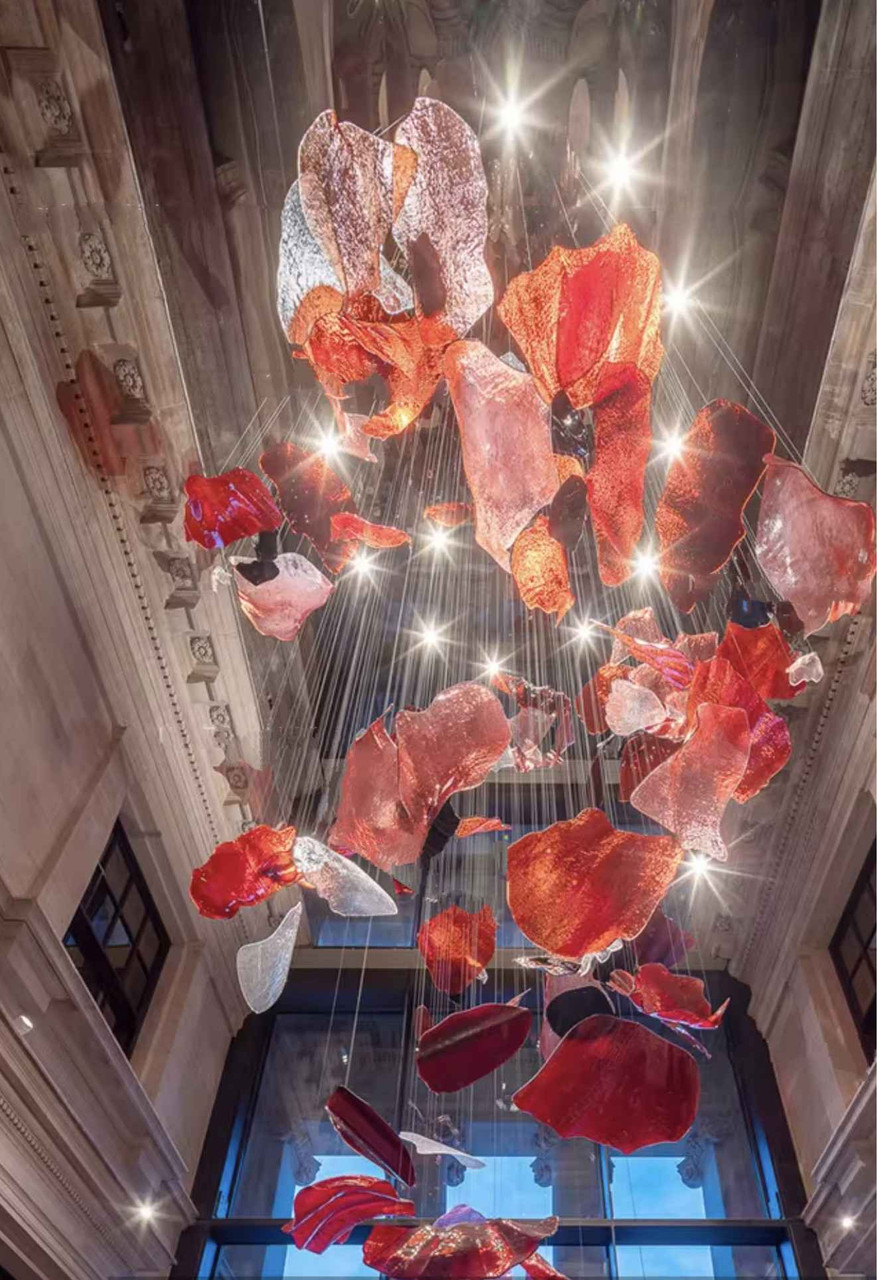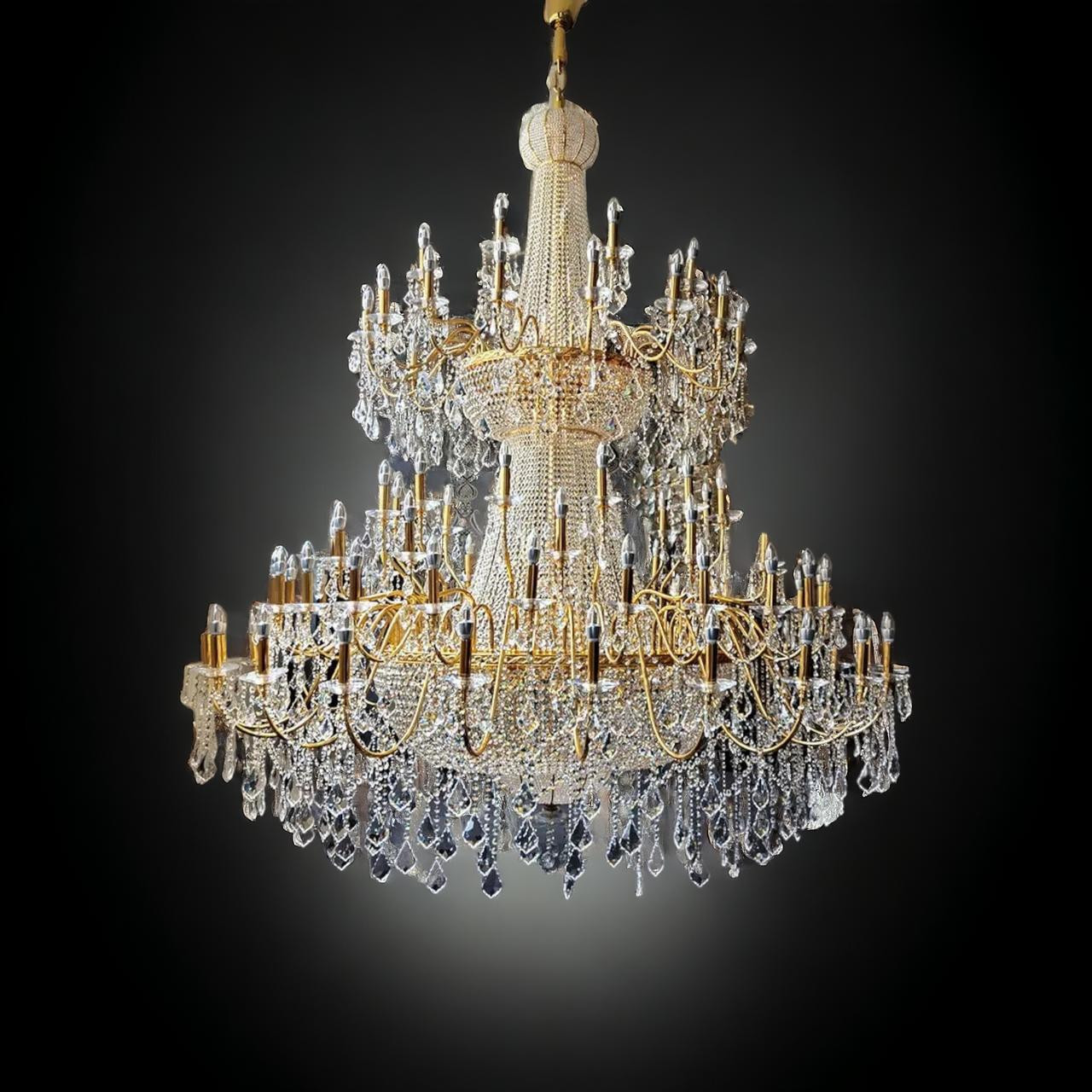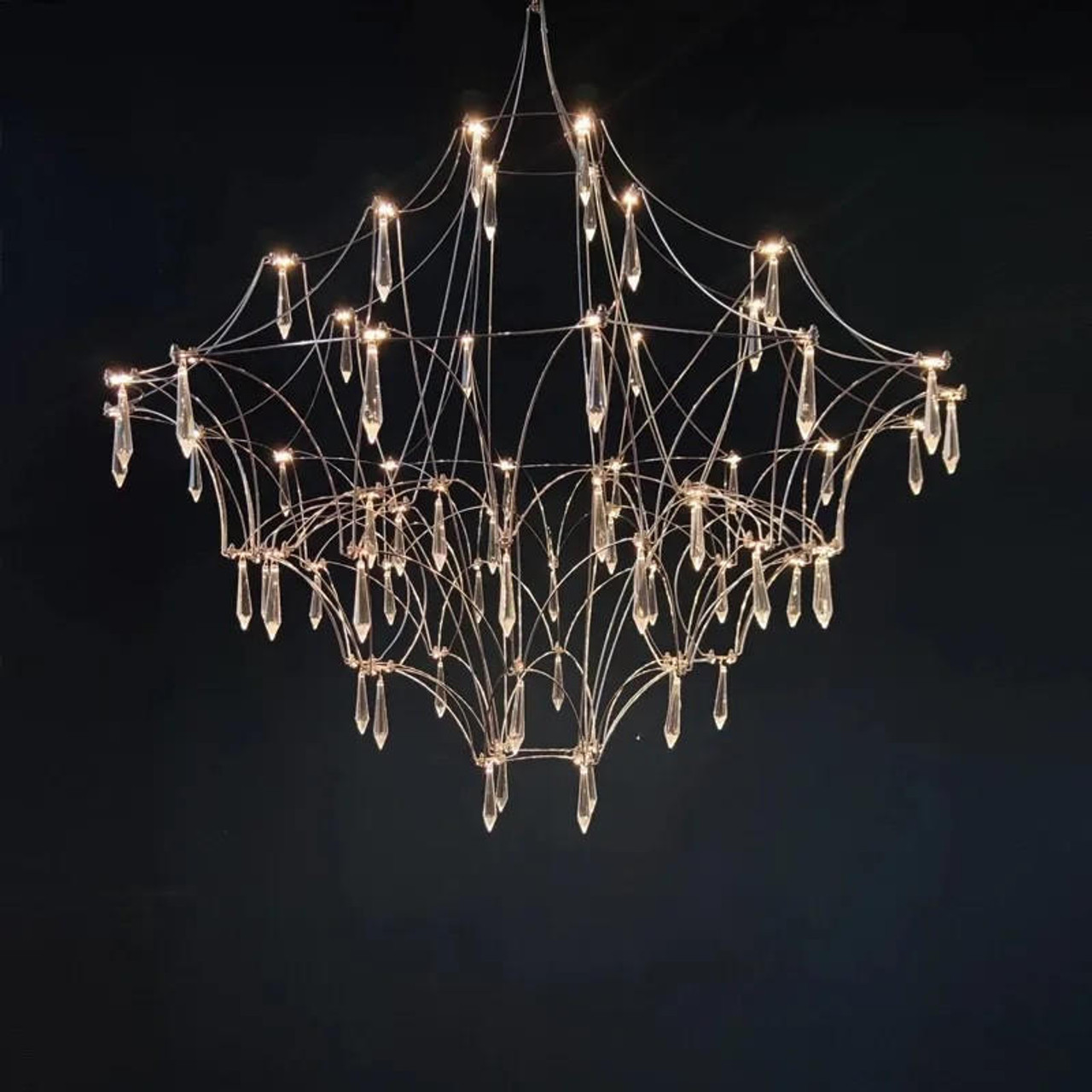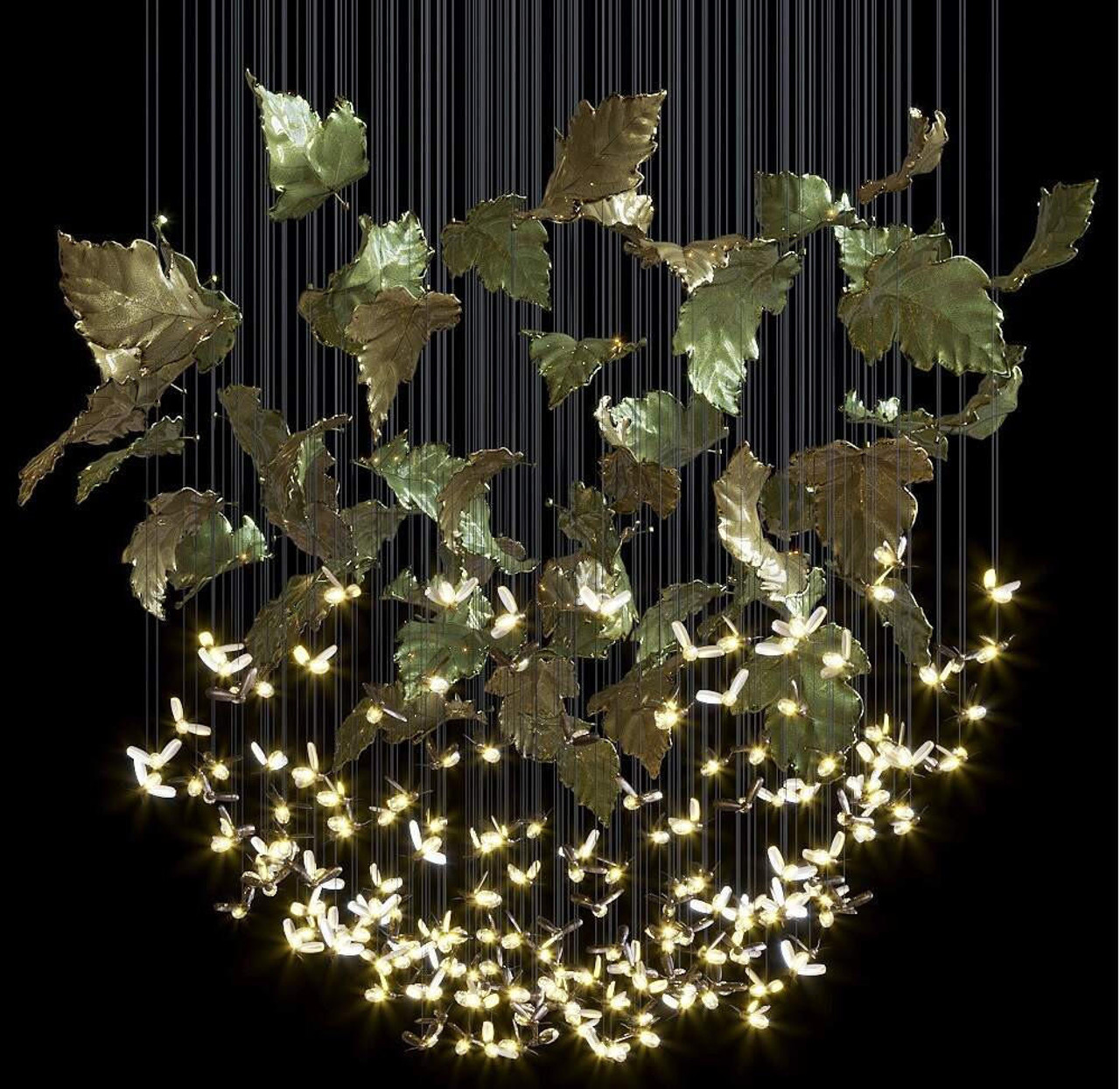Chandelier Real Crystal vs Faux: How to Tell the Difference
Sep 05, 2024
Chandeliers have long been a symbol of elegance and luxury, casting dazzling reflections and adding a touch of glamour to any room. One of the most critical elements of a chandelier is its crystals, which play a significant role in its visual impact. But not all chandelier crystals are created equal. When shopping for a chandelier, you'll encounter two primary types: real crystal and faux crystal. Understanding the difference between these can help you make an informed decision when choosing a chandelier for your home or office.
In this guide, we’ll break down the essential characteristics that distinguish real crystal chandeliers from their faux counterparts and offer tips on how to tell the difference between them.
What Is Real Crystal?
Real crystal is typically made from glass but with added elements such as lead or other minerals that enhance its clarity, brilliance, and light refraction. When light passes through real crystal, it scatters and creates a spectrum of colors, producing that signature sparkle. The higher the lead content, the more brilliant and refractive the crystal.
Some of the most famous real crystal chandeliers come from prestigious manufacturers such as Swarovski and Baccarat, whose crystal components are renowned for their unparalleled craftsmanship and quality.
The Composition of Real Crystal
Real crystal is a type of high-quality glass that contains minerals or metals, most commonly lead. The lead content in crystal typically ranges from 5% to over 30%, with the highest quality crystals containing 24-30% lead oxide. This lead content gives the crystal its signature weight and brilliance.
When you hold real crystal, you’ll often notice that it feels heavier than regular glass. This density, combined with its ability to reflect and refract light, gives real crystal its unmistakable luster and sparkle.
Common Types of Real Crystal
- Lead Crystal: Contains at least 24% lead oxide, creating a high-refractive index and superior clarity. Lead crystal is the standard for high-end chandeliers.
- Optical Crystal: Made without lead, optical crystal uses high-quality glass with other minerals to create a brilliant, lead-free alternative.
- Rock Crystal: A natural, semi-precious quartz that is mined, cut, and polished. It has a less perfect surface compared to manufactured crystals but is valued for its natural beauty.
What Is Faux Crystal?
Faux crystal, also known as "crystal glass" or "imitation crystal," is typically made from regular glass without any added lead or other minerals that enhance its clarity or brilliance. Faux crystals are often used in more affordable chandeliers as they cost significantly less to produce.
While faux crystal can look beautiful, it doesn’t offer the same sparkle, weight, or refractive qualities as real crystal. Faux crystal is more prone to scratches, dullness, and doesn't have the same luxurious feel as its genuine counterpart.
The Composition of Faux Crystal
Faux crystal is simply regular glass that is often shaped and cut to resemble crystal. However, because it lacks the lead or other minerals present in real crystal, it doesn’t have the same optical qualities.
While it can still look attractive when illuminated, it tends to produce less brilliance and less colorful light refractions than real crystal. The absence of lead also means that faux crystal is lighter and more prone to wear and tear over time.
Types of Faux Crystal
- K9 Crystal: A type of optical glass that is widely used in faux chandeliers. It is lightweight and inexpensive but lacks the brilliance of lead crystal.
- Acrylic or Plastic "Crystal": The least expensive and most common type of faux crystal. Acrylic “crystals” are durable but offer minimal brilliance or refraction.
- Glass Crystal: Regular glass that is cut and polished to mimic crystal but lacks the refractive quality of leaded glass.
Key Differences Between Real and Faux Crystal
When choosing between a chandelier with real crystal and one with faux crystal, you’ll want to consider several key factors that distinguish the two. Here’s how to tell the difference:
1. Weight
One of the most immediate and reliable ways to differentiate between real crystal and faux crystal is by their weight.
- Real Crystal: Due to the presence of lead or other minerals, real crystal is significantly heavier than faux crystal. A lead crystal chandelier will have a more substantial feel when you hold individual pieces.
- Faux Crystal: Faux crystal, particularly acrylic or glass imitation, is noticeably lighter. If you pick up a piece of faux crystal, it will feel much lighter than its real counterpart.
2. Brilliance and Sparkle
The sparkle and brilliance of a chandelier are often the key features that draw people to them. The quality of light refraction is a hallmark of real crystal.
- Real Crystal: Because of its higher lead content and purity, real crystal scatters light beautifully, creating the iconic rainbow-colored refractions. When illuminated, a real crystal chandelier will shimmer with a radiant glow that catches the eye from all angles.
- Faux Crystal: Faux crystal, on the other hand, may appear dull or muted in comparison. While it can still reflect light, the overall brilliance is far less impressive. You may notice that faux crystal lacks the vivid color spectrum and the sharp clarity that defines real crystal.
3. Sound
The sound a crystal makes when lightly tapped can also indicate whether it is real or faux.
- Real Crystal: When you gently tap real crystal with your fingernail or a metal object, it produces a clear, ringing sound, similar to a bell. This is due to the density and mineral content in the crystal.
- Faux Crystal: Faux crystal, especially acrylic or glass, produces a duller, flatter sound when tapped. It lacks the resonance of real crystal.
4. Clarity
The level of clarity is another defining characteristic of real vs. faux crystal.
- Real Crystal: Real crystal is known for its incredible clarity and flawless surface. High-quality real crystal has no visible bubbles or imperfections and can appear almost transparent.
- Faux Crystal: Faux crystal, particularly glass or acrylic, often has imperfections such as tiny air bubbles or a cloudy appearance. Over time, faux crystal may also lose clarity and develop a more opaque, dull finish.
5. Cut and Craftsmanship
The precision with which the crystal is cut can be another giveaway.
- Real Crystal: Real crystal is typically cut with expert precision, resulting in sharp, clean edges. The craftsmanship behind real crystal is impeccable, creating symmetrical, polished surfaces that enhance light refraction.
- Faux Crystal: Faux crystal may lack the intricate craftsmanship of real crystal. You may notice more rounded edges or less precise cuts, which can affect the way the light is refracted.
6. Price
Price is a major indicator of whether a chandelier is made from real crystal or faux crystal.
- Real Crystal: Real crystal chandeliers are significantly more expensive due to the cost of materials and the craftsmanship involved. High-end brands such as Swarovski and Baccarat are known for producing chandeliers that come with a premium price tag.
- Faux Crystal: Faux crystal chandeliers are much more affordable and are often marketed as budget-friendly alternatives. While they may look similar from a distance, their lower price often reflects the differences in quality, clarity, and craftsmanship.
How to Choose Between Real and Faux Crystal
Choosing between real crystal and faux crystal depends largely on your budget, personal preferences, and the intended use of the chandelier.
When to Choose Real Crystal:
- Luxury and Sophistication: If you’re aiming for a high-end, luxurious look, a chandelier with real crystal is the way to go. The brilliance, clarity, and craftsmanship of real crystal can transform any room into an elegant space.
- Long-Term Investment: Real crystal chandeliers are an investment. They are timeless pieces that hold their value and can be passed down through generations. If you’re looking for a chandelier that will last for decades, real crystal is a durable and worthwhile choice.
- Highlighting a Key Space: If the chandelier will be a focal point in your home, such as in a grand dining room or entryway, real crystal will offer the best visual impact.
When to Choose Faux Crystal:
- Budget Considerations: If your budget doesn’t allow for real crystal, faux crystal can be a beautiful alternative. While it may not have the same sparkle and weight, faux crystal can still add elegance to a space at a fraction of the cost.
- For Temporary or Secondary Spaces: Faux crystal can work well in less formal or temporary settings, such as in a guest room or rental property. It allows you to achieve a decorative look without the financial commitment of real crystal.
- Low-Maintenance Needs: Faux crystal, particularly acrylic, is more resistant to shattering and easier to clean. If you need a chandelier for a high-traffic or family-friendly area, faux crystal may be a practical choice.
Conclusion
Choosing between a chandelier with real crystal and one with faux crystal depends on a variety of factors, from budget to the desired level of elegance. Real crystal offers unparalleled brilliance, clarity, and craftsmanship, making it the best choice for those looking to make a long-term investment in luxury. Faux crystal, on the other hand, provides a more budget-friendly option that still adds beauty to a space, though it may lack the same visual impact as real crystal.
Understanding how to tell the difference between the two will help you make an informed decision when selecting the perfect chandelier for your home. Whether you choose real or faux, the right chandelier can elevate the ambiance of any room, adding a touch of elegance and sophistication to your space.

